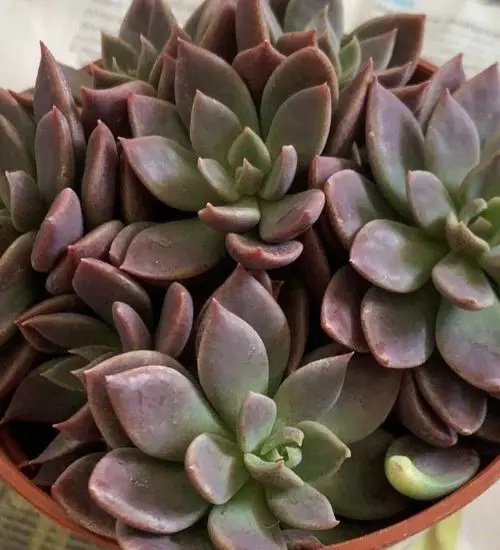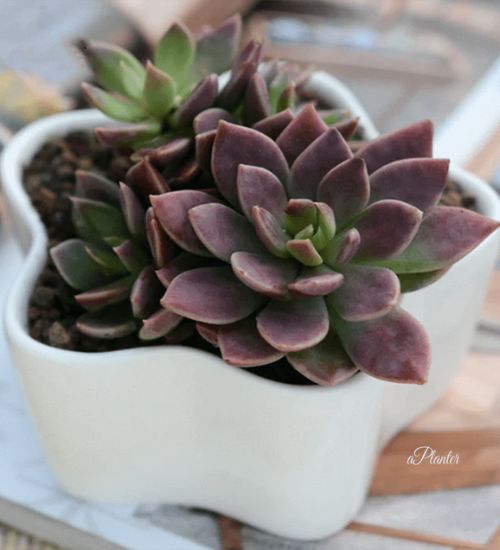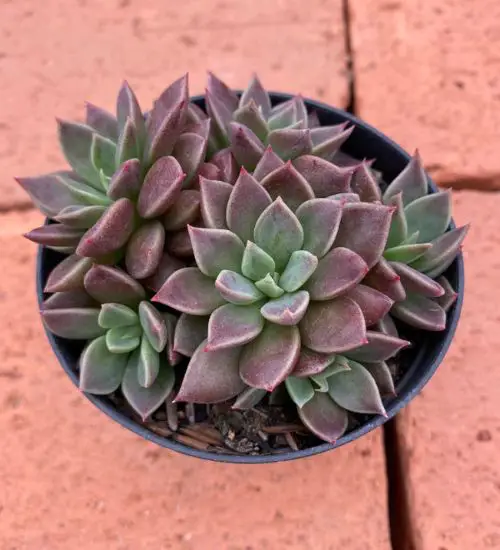Sun: Bright indoor light
Water: Typical water needs for a succulent
Temperature: Zone 7a from 0° F to 5° F (-17.8 ° C to -15° C)
Winter Survival: Cold hardy
Propagation: stem cuttings, seeds
Flower: in the summer
Flower Type: white, pink
Toxic: Generally non-toxic to humans and animals
Dormant: winter
Space Requirement: Indoors & Outdoors
Common Problems: Plants may rot if overwatered
Where to buy Sinocrassula Indica?
Basc Care for Sinocrassula Indica
Watering
Regular watering period should be every 2 weeks
You can water your succulent more than often in extreme conditions but make sure that the soil is completely dry before watering your succulent again.
Fertilizing
Only feed this succulent during its active growing seasons which means winter. Use the right fertilizer applied in the right amounts. Applying half-strength balanced fertilizer every month or so is recommended for optimal results.
Do not fertilize during winter as the plant is dormant.
Sun & Location Requirements for "Chinese jade or stonecrop"
Sinocrassula Indica needs lots of sunshine! An ideal spot is near a window that gets direct sun for a few hours every day. If you don’t have natural sunlight indoors, consider investing in an LED grow-light to provide enough light for "Chinese jade or stonecrop" to stay healthy and vibrant.
As per this succulent profile, it is only able to stay healthy when the environment temperature is above the range of zone 7a from 0° F to 5° F (-17.8 ° C to -15° C).
Sinocrassula Indica is known for its cold hardiness and ability to survive in frigid winter temperatures. This succulent's thick leaves and stems help it retain moisture, aiding it in surviving freezing temperatures. Additionally, the succulent's attractive foliage offers a festive touch to any garden in cold climates. With its ability to survive down to 0°F, "Chinese jade or stonecrop" is an excellent choice for areas with frosty winters.
Any succulents in the group will need a medium space to grow. You can place your pot at your table or window. Since this plant needs more space than mini succulents, you should consider do not plant them together with other succulents/plants.
Sinocrassula Indica also benefits from some indirect light throughout the day as well, so make sure you give it enough space to soak up light without becoming too exposed to heat.
Propagation
Propagating Sinocrassula Indica by stem cuttings is an easy and fun way to increase your collection of these unique houseplants. When propagating, it’s important to choose healthy stems from existing plants that are at least two inches long and have several leaves attached.
Growing Sinocrassula Indica from seeds is an easy and economical way to produce more plants. Identify a healthy seed by its plumpness, dark color and slightly sticky texture. Once the potting mix has been pre-mixed with well-draining soil, sow the seeds evenly and press lightly into the surface. To ensure germination, keep the container in bright but indirect light and mist the soil gently with a spray bottle.
Toxicity

Sinocrassula Indica is generally non-toxic to humans and animals. However, it is important to be aware that certain parts of the plant may contain toxins which can cause mild skin irritation. It is advised that you keep the plants away from small children or pets, as they may unknowingly ingest them and suffer ill effects.


